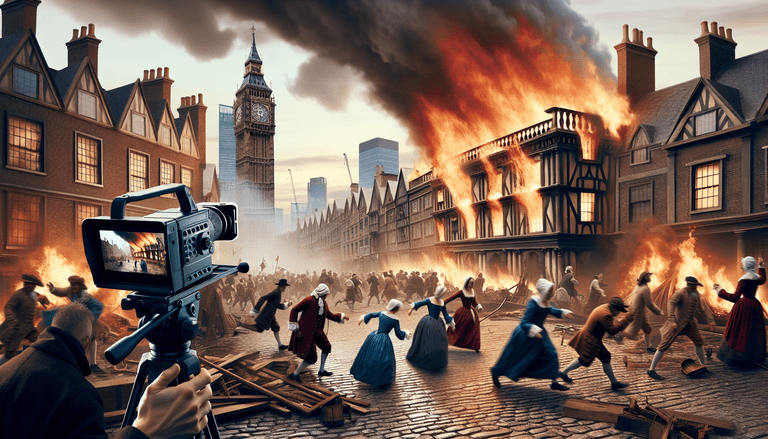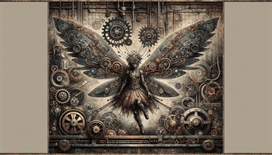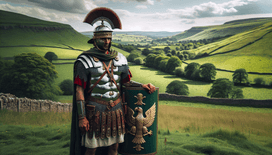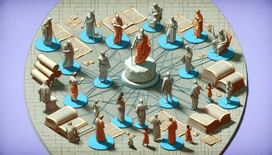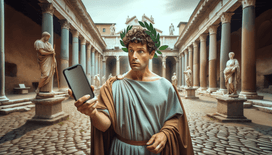Gather 'round, my dear history enthusiasts and digital daydreamers, as we ignite our imaginations with a burning question: what if the Great Fire of London in 1666 was livestreamed? Picture yourself as a virtual tourist in this alternative timeline, where the flames dance across the city and our 21st-century technology broadcasts the unquenchable blaze to every corner of the globe.
The fiery beginning of livestreaming
In the early hours of 2nd September 1666, baker Thomas Farriner unwittingly set the stage for a historical event that would change London forever. Now, consider our modern spin on this historic inferno: an alert pops up on your smartphone. It's a notification from "London Blaze: Live", a daring new app that leverages the power of smartphones, drones, and social media to bring you the hottest (pun very much intended) news right as it unfolds.
Picture brave Dr Thomas Farriner, transformed from culpable baker to the reluctant influencer of the day, hastily activating his drone fleet. Within moments, an armada of fluttering devices ascends to capture the conflagration from every possible angle. "London Blaze: Live" subscribers tune in with both horror and fascination as the fire grows into a fiery monster, threatening to devour the city.
InstaBlaze: Fireside chats and social media mania
As Londoners find themselves caught up in the chaos, they reach for the only tools capable of documenting this unprecedented catastrophe, smartphones. Instagram accounts spring to life with hashtags like #BurningBorough and #FireInTheSky, populating the internet with real-time images of flames reflecting off the Thames.
A young Samuel Pepys, who we're familiar with as a diarist, becomes London's first vlogger. Sporting a GoPro helmet, he expertly navigates the crowded streets, live-tweeting his escape from the encroaching inferno. "Currently sheltering in Cheese Lane," an update might read. "Not something I’d gouda recommend. #FireFightForLife."
Tudor Twitter: Sparks fly on social media
On Twitter, citizens engage in rapid-fire debate over the best courses of action, sharing survival tips alongside rampant conspiracy theories. The finger-pointing is fiery: Spaniards! French! Mysterious papists with a penchant for pyrotechnics! Little do they know, the responsible culprit was the humble fireplace chimney.
King Charles II, embracing the hashtag-driven diplomacy of "Tudor Twitter", tweets from Whitehall: "Citizens of Londinium, do not fret! #WeShallRebuild 🔥🦁." Merchants of misinformation are quickly snuffed out as teams of regal fact-checkers work overtime, quelling fears with digital aplomb.
Virtual reality visions of disaster
Meanwhile, virtual reality developers seize the moment to produce immersive experiences, allowing viewers to explore the winding streets engulfed by flames. Through VR headsets, digital tourists witness the fire devouring historical landmarks such as St. Paul's Cathedral (fortunately, we have backups in the Cloud!).
Urban planners and architects from across the globe tune into these fiery streams, digitally rolling up their sleeves to prepare blueprints for reconstructing and fireproofing the gutted metropolis.
Crowdfunding the comeback
Emboldened by the indomitable human spirit and sense of community, Londonians take to crowdfunding platforms to pitch in for the restoration of their city. Campaigns such as "Building Back Better: The Great Fire Recovery Fund" blaze through the digital ether, raising funds at a pace that rivals the fire itself.
Collaborative solutions pour forth from this hive-mind of global generosity, as historical architects and modern engineers blend their knowledge to create an enhanced and fire-resistant London 2.0.
Lessons in resilience
The Great Fire of London, with its ghostly ashes now pixelated memories, serves as a digital testament to the resilience and fortitude of a city united by both tragedy and technology. As we sign off our virtual odyssey, let us revel in the possibilities of our imaginations and ponder the extraordinary ways technology could have rewritten history.
So, my dear readers, next time you find yourself caught in traffic or encountering the daily grind, perhaps you’ll entertain a cheeky thought: "How would this look on a livestream?"
